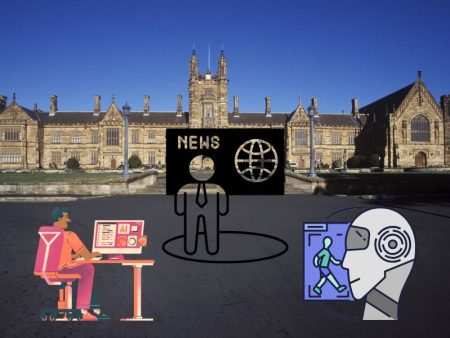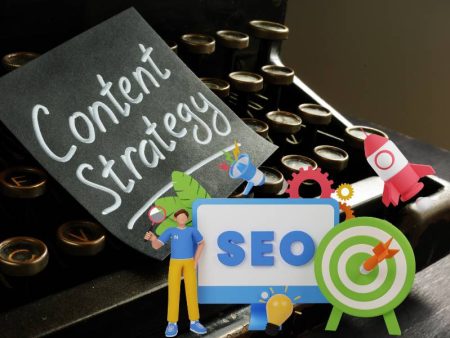Okay, let’s be real for a second. Writing sales copy is hard.
Like, actually hard.
You’ve got roughly five seconds—if you’re lucky—to hook someone before they click away, get distracted, or scroll past. You need the perfect headline. The flawless intro. That golden middle where you drop all the juicy benefits. And don’t forget the CTA—the call-to-action that actually makes people do something.
It’s kind of like trying to nail a first impression while also selling someone a vacuum cleaner. Or a course. Or whatever it is you’re offering. And let’s not even get started on trying to sound clever, persuasive, and “on-brand” all at once. 🫠
But here’s where the plot twist comes in. What if…you didn’t have to do it all on your own?
Meet Your New Copy Co-Writer: AI
Before you roll your eyes and mutter, “Ugh, another robot?”—hear me out.
I’m not saying robots are coming for your job (calm down, copywriters of the world), but I am saying that a good AI Writing Assistant can save you hours. Maybe even days.
And no, it’s not cheating. It’s collaborating. Kind of like working with a really nerdy intern who’s read every headline swipe file from the last decade and never needs coffee breaks.
Let’s dive in—from headline to CTA—on how AI can help you write sales copy that doesn’t just sit there looking pretty, but actually sells.
1. The Headline Hustle: Hook, Line, and…Scroll?
Here’s the cold truth: if your headline doesn’t slap, nothing else matters.
I’ve seen amazing products die a quiet digital death because the headline was boring, confusing, or—worst of all—forgettable.
Now, imagine feeding a few keywords into an AI tool, and bam! You get a bunch of headline variations. Some punchy. Some classic. Some weird but kinda intriguing.
You don’t have to use them all, obviously. But even one fresh idea can unlock a better angle. Think of it like having your own headline brainstorm session without booking a Zoom call or bribing a coworker with coffee.
Best part? The AI doesn’t judge you when you type in “Make this sound less lame.” (I’ve done that. Many times.)
2. Opening Lines That Actually Open Doors
Alright. You’ve nailed the headline. Now what?
Cue the intro—the first couple lines that decide whether people read on or bounce.
If you’re anything like me, you’ve rewritten your intro paragraph sixteen times only to end up right where you started.
AI can help you kick things off with a bang. And not just with generic filler. With the right tool, you can input your product description or value prop, and it will spit out different ways to start your copy—casual, bold, emotional, data-driven…you name it.
Think of it as your starting point. You can always tweak the tone. Add some personality. But instead of staring at a blank doc for 45 minutes, you’re shaping real ideas in 5.
That’s not just efficient. That’s sanity-saving.
3. Benefits Over Features (And Saying It So It Sticks)
One of the trickiest things in sales writing?
Stopping yourself from just listing features.
You know what I mean. Instead of saying your online course has “25 modules,” you need to say what that means for the buyer—like “You’ll finally go from confused to confident in under two weeks.”
AI tools can actually be trained to do this. They can take a list of features and flip them into benefits. You still want to polish it, obviously. But the rough draft is there—you’re no longer starting from scratch.
And when it comes to the meat of your copy—where you’re breaking down the offer, adding social proof, handling objections—AI can help you structure it all logically. Not in a cold, robotic way. More like that one friend who reads every landing page and always points out where it gets boring or unclear.
(Shoutout to that friend. You’re a hero.)
4. Emotional Nuance: Yes, Robots Can Be Empathetic… Kinda
Look, we’re not pretending AI has feelings. But good copy? It’s about feelings.
You want your reader to feel seen, understood, and even a little bit excited. And AI can actually help you tap into emotional triggers—fear, desire, curiosity, relief—by suggesting angles that align with human psychology.
For example, let’s say you’re selling a skincare serum. You tell the AI it’s for people who’ve tried everything and still struggle with acne. It might give you copy that leans into frustration, then hope. Something like:
“You’ve tried every serum, scrub, and ‘magic’ mask out there. Still breaking out? Yeah, we’ve been there too. That’s why we made this.”
Does that sound cold and robotic? Nope. Sounds like empathy, packaged into a tight sentence. With a little editing, it’s your voice—just faster.
5. CTAs That Actually Make People Click (and Not Just Smile)
Ah yes, the Call-To-Action. The final boss.
CTAs are like dating app openers. If it’s too vague? No response. Too aggressive? Also no. Too clever? Ugh, why are you trying so hard?
AI can offer CTA variations based on your copy’s tone and audience goals. Want something warm and friendly? Try “Let’s get started.” Going for bold? Try “Yes, I want this now.” Subtle? “See how it works.”
You’re not just guessing anymore. You’re picking from tested options that you can A/B test—and iterate without tearing your hair out.
But What About Originality?
Ah, good question.
It’s true: when you’re using AI, especially for content creation, you need to make sure your copy is actually yours. That’s where a good Plagiarism Checker comes in.
Look, AI is smart, but it pulls from patterns it’s seen. If it spits out something that sounds oddly familiar? You don’t want to risk publishing someone else’s work without realizing it.
The best practice? Use the AI as your draft assistant—but give it a strong edit pass. Tweak, rephrase, inject your personality, and always check for originality. It’s a bit like using seasoning—you still have to taste it.
A Tiny Detour: My “Oops” Moment
Quick confession. I once used an AI tool to write a Facebook ad. It sounded amazing. Witty, confident, on-brand. I hit publish.
Two hours later… someone DMs me: “Didn’t this exact ad run for another product last year?”
😳
Yup. Turns out, the tool had echoed copy from an old (very viral) campaign. Lesson learned.
Now I always run a Plagiarism Checker. One click. No more red faces.
Wrapping It Up—So, Can AI Really Help You Write Better Sales Copy?
Totally. If you use it right.
Here’s the thing though—it’s not about replacing your creativity. It’s about freeing it. You still bring the strategy, the understanding of your audience, the humor, the edge. AI just helps you shape it faster and with less guesswork.
From the first headline to the final CTA, you can use tools like an AI Writing Assistant to get better drafts faster—and refine them into something that’s 100% you.
So the next time you’re stuck in a sales copy spiral at 2am, staring at your screen wondering if “Buy now” sounds too desperate…
Fire up your AI buddy. Brainstorm. Write. Edit. Test.
And hey, sell something that matters.
Final Words?
You’re not just writing to sell. You’re writing to connect. To help. To serve.
AI just makes the road less bumpy.
And honestly, in a world where everyone’s inbox is overflowing and attention spans are shrinking… a little help from a machine isn’t just smart. It’s kind of genius.
Now go make magic. One headline at a time.
✍️✨💡


